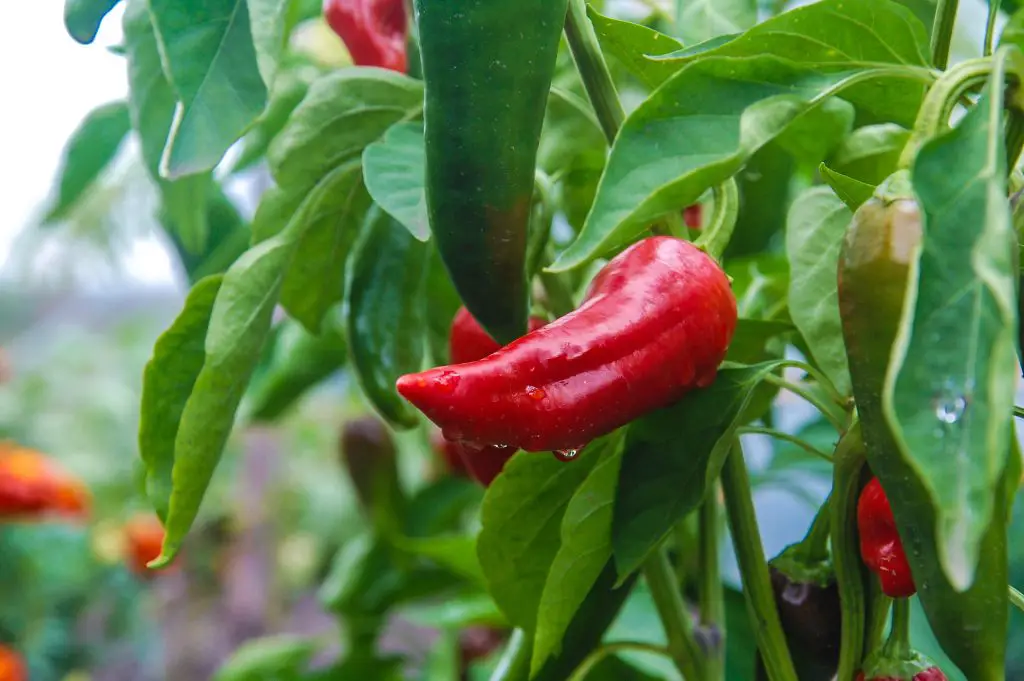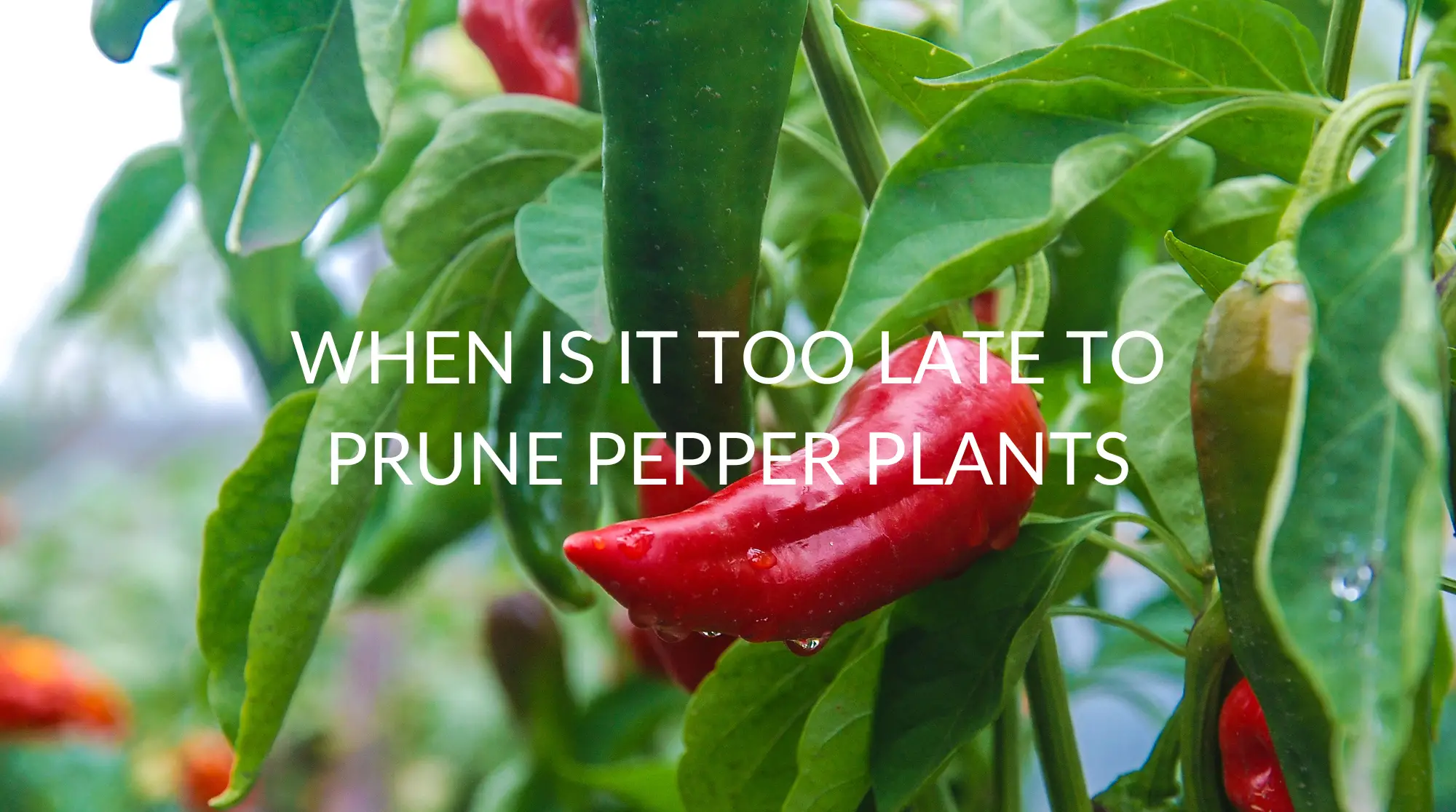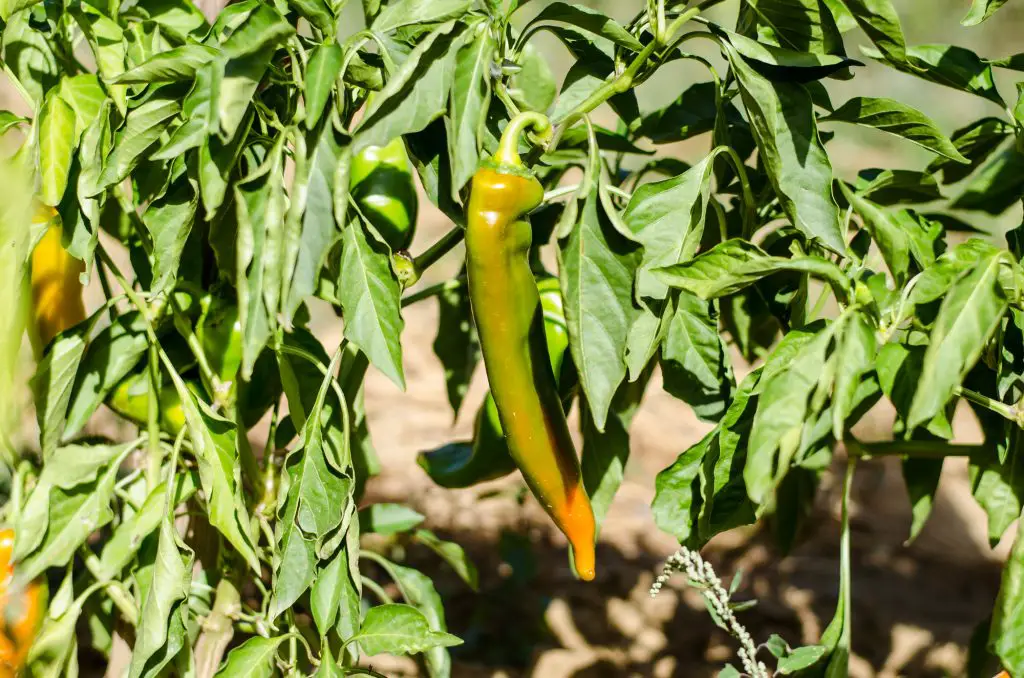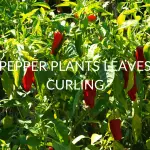Planting and helping your leafy friend flourish is rewarding and even therapeutic. This is especially true if your choice of plant produces a fruit or veggie you can enjoy, like the pepper plant!
If you’re tending to your garden and wondering how best to care for this type of flora, you may be unsure about how often or how late you can remove the dead or useless parts. It is a fair question: when is it too late to prune pepper plants?
According to the Gardening Channel, pepper plants should be pruned for the last time a month before the first frost of the season. After this time period, pruning can be destructive to the pepper plant.
Thanks to a careful gathering of research, this article will not only cover when it is too late to prune pepper plants but how to prune them, why to prune them, and even a few related questions!
Do Peppers Need To Be Pruned?
If you’ve got more than one plant in your garden to care for, it can be tempting to leave the dead parts of a plant attached. You may be curious about how necessary pruning a pepper even is.
According to professional horticulturist Jessica Walliser, pruning a pepper isn’t a must-do for the plant, and it will still produce a good harvest if left alone. However, pruning does have health benefits when done correctly.
Some of these health benefits include strengthening the stems by relieving them of unnecessary weight, giving the branches more room to expand, and removing the chance that some of the dead foliage will carry disease to the rest of the plant.
So, the answer to the question “do peppers need to be pruned” is: no, but it can help your pepper plant to thrive!
When Is It Too Late To Prune Pepper Plants?
If pruning pepper plants correctly is all about timing, then perhaps one of the most important facts to get straight is when it is actually too late to prune pepper plants.
Pepper plants should be pruned for the last time before winter, about one month before the first frost of the season. Because a pepper plant is not likely to grow any more fruit after the first frost, pruning later than this will yield little to no results for the gardener.
Be sure to check online or a farmer’s almanac for when to expect the first frost of the season where you live. For example, the first frost dates of the fall in the northern United States are in September, while the first frost in the southeastern side of the continent isn’t expected until as late as the first week of December.
Remember, if you’re inside a month before the frost comes, it is too late to prune that pepper plant!

When To Prune Pepper Plants
Now that we’ve covered how late to prune pepper plants, it can be beneficial to know when it is right to remove dead foliage from your leafy friend.
According to gardening writer and pepper-plant owner Maya of Gardening Chores.com, pepper plants can be pruned three different times during their life span.
- Early Season – The early season in the life of a pepper plant can be measured by the fact that the plant has reached ten or twelve inches in height. You will notice your plant growing similarly to the shape of the letter “Y,” and maintain this shape in your pruning.
- Mid-Season – Mid-season pruning is a little trickier to time since there are no set dates establishing when the mid-season begins and ends. Instead, choose when your plant’s mid-season has begun by waiting until it is established enough to start bearing fruit. The goal of pruning during this time is just to keep your plant fit and healthy.
- Late Season – As discussed, the last time a pepper plant is pruned should be about three weeks before the first frost of the season. Hopefully, it will be fully mature, somewhere between two and six feet in height, and bearing fruit.
There are times when you should avoid pruning your pepper plant. For example, if your peppers have just recently been irrigated or if it rained a short time ago, let them dry and try pruning again in the morning or evening of moderate climate.
Should I Cut The Bottom Leaves Off My Pepper Plants?
If you’ve noticed leaves around the base of your pepper plant, you may be curious about whether or not to remove them. This process is called bottom pruning, and it is encouraged for the health of the fruit!
Not only can getting rid of the base leaves clean up that ideal Y-shape your pepper plant needs, but the task can keep it from absorbing harmful elements from the soil. This may seem confusing since plants need soil to survive, but actually, direct contact between leaves and soil can cause the pepper to absorb deadly viruses.
Therefore, it is a good idea to remove any branches or leaves that sprout between six and eight inches from the soil bed. It is usually done during the Spring, but it should be a chore that is maintained throughout the plant’s life.
How To Properly Prune Pepper Plants?
If you do decide that pruning is useful to your pepper plant, you’ll have to do it the right way! Check out the list of tips below to properly prune pepper plants:
- Understand Which Pepper You Have
- Prune Only Dry Peppers
- Prune With Clean Instruments
- Clip the Stems During Harvesting
- Cut Branches at the Right Place
- Get Rid of the Right Leaves
- Properly Dispose of Eggs and Diseased Leaves
Let’s take a closer look at each of these tips in order to understand why they will produce the best results for the health of your pepper plant.
1. Understand Which Pepper You Have
Knowing which pepper variety you own is essential to practicing the right pruning methods! There are 15 varieties commonly grown in gardens, and each has unique needs. The main differences, however, can be determined by how large or small the fruits that your plant produces are.
For example, if you have a larger pepper type, like bell or poblano, you should not pinch away the main growing point of the pepper during pruning. Yet, if you are growing a plant that yields smaller peppers like thai peppers, this is a crucial step to take!
Analyze your plant’s pruning needs based on their variety, first, and then carry on with what is best for that specific plant!
2. Prune Only Dry Peppers
The pepper plant is protected from most diseases that water carries…unless you decide to open them up and leave them vulnerable by pruning after watering or during a wet period of time.
Pruning necessarily opens wounds in the plant. A pepper stalk can, of course, recover from these wounds and heal stronger and healthier thanks to your pruning. However, while the incision pruning made heals, water has direct access to the plan, leaving it exposed to fungal infection and viruses. Be sure your plant is dry before pruning!
3. Prune With Clean Instruments
This tip is not only healthy for the plant but healthy for the gardener tending to it, as well. When pruning any pepper plant, remember that a key reason for the chore is to get rid of diseased or infected areas.
This means that whatever you’re using, whether it is your hands or gardening tools like shears, can carry the germs. Some viruses harmful to your pepper plant can survive on a pair of dirty shears for weeks.
Also, your own hands can carry bacteria harmful to the plant. For example, if you smoke, you may be carrying the right ingredients for a tobacco mosaic virus. This is a kind of weakness particular to pepper plants.
Always make sure that your hands are clean, and consider wearing gloves, before pruning. Be sure to disinfect your shears, too.
4. Clip the Stems During Harvesting
Harvesting your peppers is an exciting time, but don’t forget to be careful of the parts of the stem you’re cutting into! Peppers are a hardy fruit, and no matter what variety you’re growing, it is crucial to remember that they cling to their plant very firmly.
Therefore, the best course of action is to just snip the stem close to the fruit. Otherwise, you may find yourself ripping away a whole branch and depriving the plant of a healthy limb.
5. Cut Branches at the Right Place
Although the above point makes cutting down branches seem like a bad move, there are circumstances where it can be helpful to get rid of a whole branch of your pepper plant.
For example, if you see any stems or branches that are pointing inward instead of outward in that classic Y-shape, it is a good idea to get rid of those. This allows new peppers to hang freely without being obstructed by unnecessary branches.
Once you’ve determined which branches need to go, cut them at least three millimeters higher than the pepper buds. Otherwise, you may wind up hurting the buds themselves and getting less fruit. Additionally, clear away any leftover debris to avoid mushiness on the plant.
6. Get Rid of the Right Leaves
Removing the correct leaves is essential to getting the most out of the pruning process for your plant. If you’re not careful, you can get rid of leaves that are necessary for the health of the peppers.
Only clip leaves if they are hanging over peppers and obscuring them if the leaf is covered in spots, if the leaf is too close to the bottom of the plant, or if the leaves are at the very top of a brand-new plant.
If your leaves are simply brown or a little wilted, give them time to bounce back after hydrating the plant better. Sometimes these discolorations are just a result of not giving your peppers enough water.
7. Properly Dispose of Eggs and Diseased Leaves
If you spot bug eggs on your pepper plant’s leaves, or if they have turned black or speckled with a disease, you need to prune the area. This will give your pepper plant the best chance at recovering its health.
However, there is a wrong way to dispose of eggs and diseased leaves. For example, if you toss them in a compost pile or to the ground, both the virus and the eggs will have no problem spreading to the rest of your plot of land.
Instead, burn the leaves that carry insects and pathogens. If this isn’t something convenient for you, you can seal them in a garbage bag and throw them away safely.
Summary
In summary, pepper plants don’t always require pruning, but there are health benefits to doing so. In fact, when a pepper plant is pruned at the right time, they yield better fruit and are all-around stronger. Pepper plants should be pruned according to their variety and according to signs of disease or insect infestation, which could harm the plant.
Pepper plants should also be pruned at least three times a year: during the early season, the mid-season, and the late season. Late season pruning should happen for the last time a month before frost. If you want to prune your pepper plant three weeks before the first frost, it is too late to prune!







